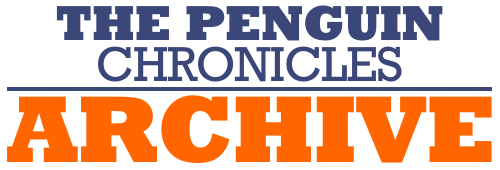Crim of the crop
 One race proves that a city - and its runners - can leave the past behind and head in a new direction.
One race proves that a city - and its runners - can leave the past behind and head in a new direction.
I had wanted to go to the Crim Festival of Races, in Flint, Michigan, for years. I didn't go because (1) my mother had competed in the event and told me that I should go and, even at 56 years old, I don't like my mother telling what to do; and (2) I could never fit it into my schedule. Now that's changed. I've been to the Crim and I've seen how a city can take a look at itself, move forward, and search for a better identity. And no, I don't always do what my mother tells me.
Driving into Flint is like passing between parallel universes. In one universe there's the old-time, hard-core General Motors and United Auto Workers Flint. The city has been, and in some ways is still, a solid blue-collar town. But those days are mostly gone now, and what was once the Chevy plant is now a barren field of concrete. And the other universe is the new Flint. The downtown is being rebuilt and refurbished, giant industries are being replaced by small entrepreneurial enterprises, and the feeling around town is one of hope.
The bridge that connects the two Flints is the Crim Festival of Races. The race is named for Bobby Crim, who created the 10-mile race in 1977 to benefit the Special Olympics. Now 74, the former Michigan State Speaker of the House is still there, still a part of the festivities, and still signing T-shirts. If you ask him, he'll tell you that a 10-mile run just seemed like a good way to raise money for kids who needed it.
The race has been going on since Flint was the capital of the auto industry, but today the Crim isn't just a 10-miler. There's an 8-K run/walk, a 5-K run, a 5-K walk, a one-mile run and walk, and a Teddy Bear trot. There are kids runs, Special Olympics races, a host of activities that you just know were never a part of the original vision.
It's also much more than just a fund-raising event now. The Crim is a powerful symbol of a town struggling to remember what it was, while acknowledging what it's becoming. Recently, that distinction became clear as I followed the blue line - the painted line that traditionally marks a race's course - through the 8-K race. I marveled at the transformation that Flint is making. The blue line led us through a fairly depressed urban area into the downtown, where you can find coffee shops, gourmet restaurants, and art galleries.
As I ran alongside my fellow back-of-the-packers and we passed through their neighborhoods, it occurred to me that they, like their city, were making a comeback of their own. I met a woman healing from a broken relationship, and ran with a man about my age who told me he felt like running gave him the opportunity to dream again. They, and many others, were getting their bodies and their souls back in shape.
Many of us adult-onset athletes face the challenge of following that blue line forward. We run slowly, some of us laboriously, and some are in better shape than others. The challenge is that sometimes the joy that we feel when we move forward doesn't always overcome the sadness we experience looking back.
We, like Flint, have no choice. Life goes in only one direction. It goes forward. Our futures rely on our ability to adapt, change, grow, and follow that blue line.
Waddle on, friends.

